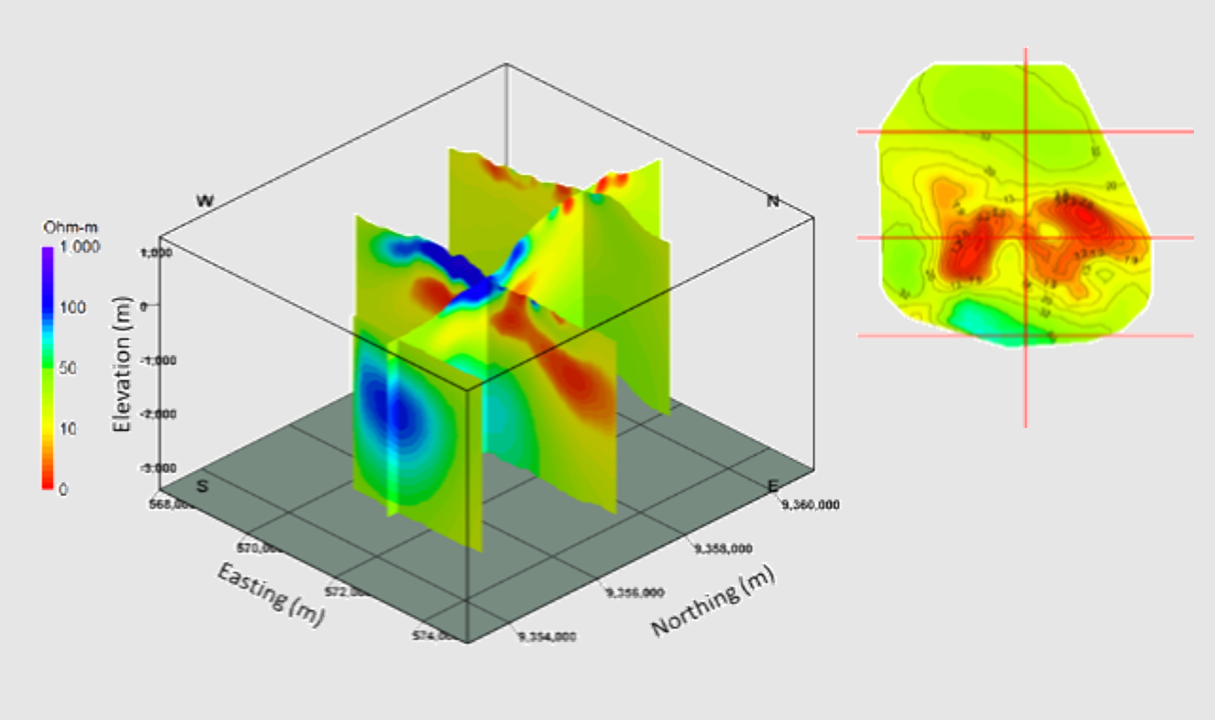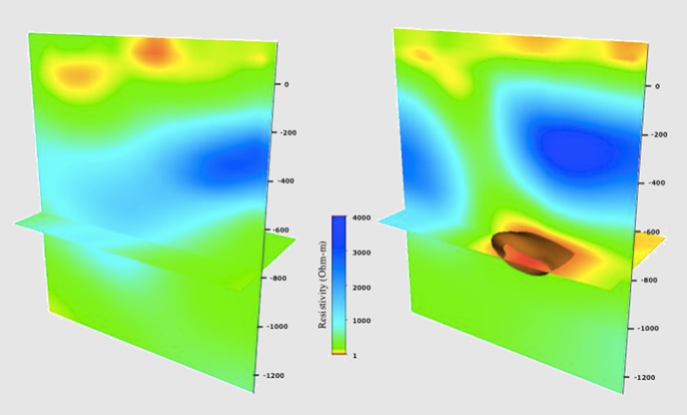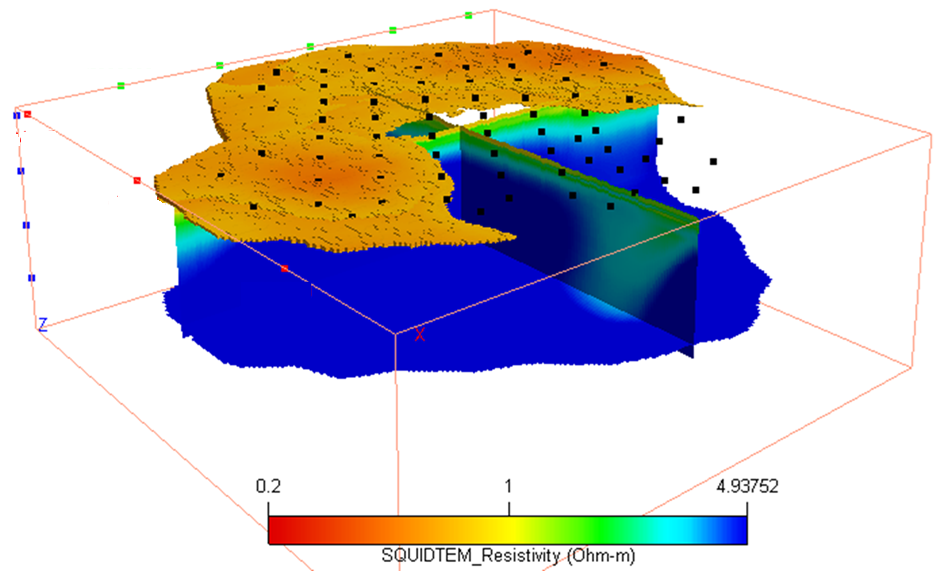SQUID-TEM : USE CASES
Oil and Gas, Geothermal, CCS and Critical Minerals
Oil and Gas Reservoir Exploration in APAC onshore field
- Challenge "More information on reservoir"
- Solution
- Result
The target reservoir was located around few thousands meter deep. Hence, the conventional EM survey method might be insuffcient in terms of depth of investigation.
We introduce an innovative method utilizing highly-sensitive SQUID magnetic sensors paired with an electric bipole transmitter.
Unlike conventional induction coils, SQUID sensor enables a direct B field measurement rather than its derivative. This allows for later time recordings, corresponding to deeper subsurface investigations. Our deep SQUID-TEM is able to to provide an independent non-seismic data source in order to verify/derisk lithology/fluid content at the target reservoir depth.
Map out 3D geoelectrical imaging at even few thousands meter depth that helps to identify the presence of hydrocarbon reservoir.

Geothermal Reservoir Exploration (Southern Sumatra region, onshore Indonesia)
- Challenge "Success ratio of drilling"
- Solution
- Result
Electric conductivity is an important indicator of the location of geothermal sources. Until recently, the magnetotelluric survey (MT) was the preferable method for the geoelectrical exploration of geothermal systems.
MT system is suited for wide area survey, while its drawbacks might be less resolution and accuracy in order to map out accurately the geothermal system and reservoir around few thousands of meter depth. Moreover, the exploration area is located around rainforest and steep mountain area, which makes it difficult for MT system to conduct an accurate measurement.
The use of the SQUID-TEM configuration with line source provides high signal strength and low noise/capability to detect very weak signals (higher S/N ratio). These two when combined, increase the depth of investigation significantly relative to standard TEM / CSAMT.
It is reasonable that the SQUID-TEM could be able to image both the top and bottom of the conductor when it is above about a few km depth.
The two distinct deep conductors, possibly interconnected, were identified at depths of interest expected. The conductor appears to have a surface expression roughly in the center of the inversion domain horizontally. These conductive zones could be considered indicators of the geothermal source locations. Thus, the SQUID-TEM survey helped identify the deep conductive anomalies representing geothermal targets in the survey area.

CCS Time-lapse Reservoir monitoring (Middle East)
- Challenge "Cost Effective CO2 Plume Monitoring"
- Solution
- Result
Accurately characterizing the subsurface geology and geophysics are challenging due to the inherent uncertainties in geological formations. This affects the prediction of CO2 behavior and its interaction with the surrounding rock and fluids.
Current monitoring technologies may not provide the necessary resolution or coverage to detect subtle changes in the reservoir. The costs associated with deploying and maintaining monitoring equipment, as well as analyzing the data, can be significant compared to project budget. Hence, cost-effective advanced geophysical monitoring techniques are needed.
The "time-lapse" SQUID-TEM measurements have been made before (i.e., baseline measurement) and after injection of mixture of seawater/CO2 fluid into the subsurface reservoir. The goal was to produce 3D resistivity models around the injection borehole before and after the fluid injection and determine the injected fluid's location.
The inversion of the post-injection survey data clearly identified the new conductive zone centered about expected injection depth and offset slightly to the one side of the borehole. This zone is interpreted to be the location of the injected CO2 and seawater mixture.
This result demonstrates that the SQUID-TEM method represents a powerful technique for monitoring the injection of conductive fluids at deep reservoirs.

Critical Minerals
- Challenge "Accurate reservoir identification"
- Solution
- Result
The target is mineral-contained brine in sedimentary rocks, and it forms a relatively thin layer(s) at the deeper section. There is an obvious challenge for a relatively deeper reservoir exploration by using conventional electrical/electromagnetic methods.
Among those electrical/electromagnetic methods, SQUID-TEM developed by SUSTEC is one of the most appropriate methods because of its high S/N ratio, depth of investigation (sensitivity), mobility, etc. The objective is to map out the geoelectrical image that helps client to identify the conductive anomaly that might be able to link to the mineral-contained brine deposit in the survey area.
The inversion successfully recovered the 3D distribution of the resistivity of the subsurface at the area of interest. Field data inversion revealed conductivity anomalies, which may correspond to the lithium brine deposit. Our result (resistivity structure in the survey area) can be definitely improved if more known information, such as additional well-logs etc., are provided and used for inversion.
